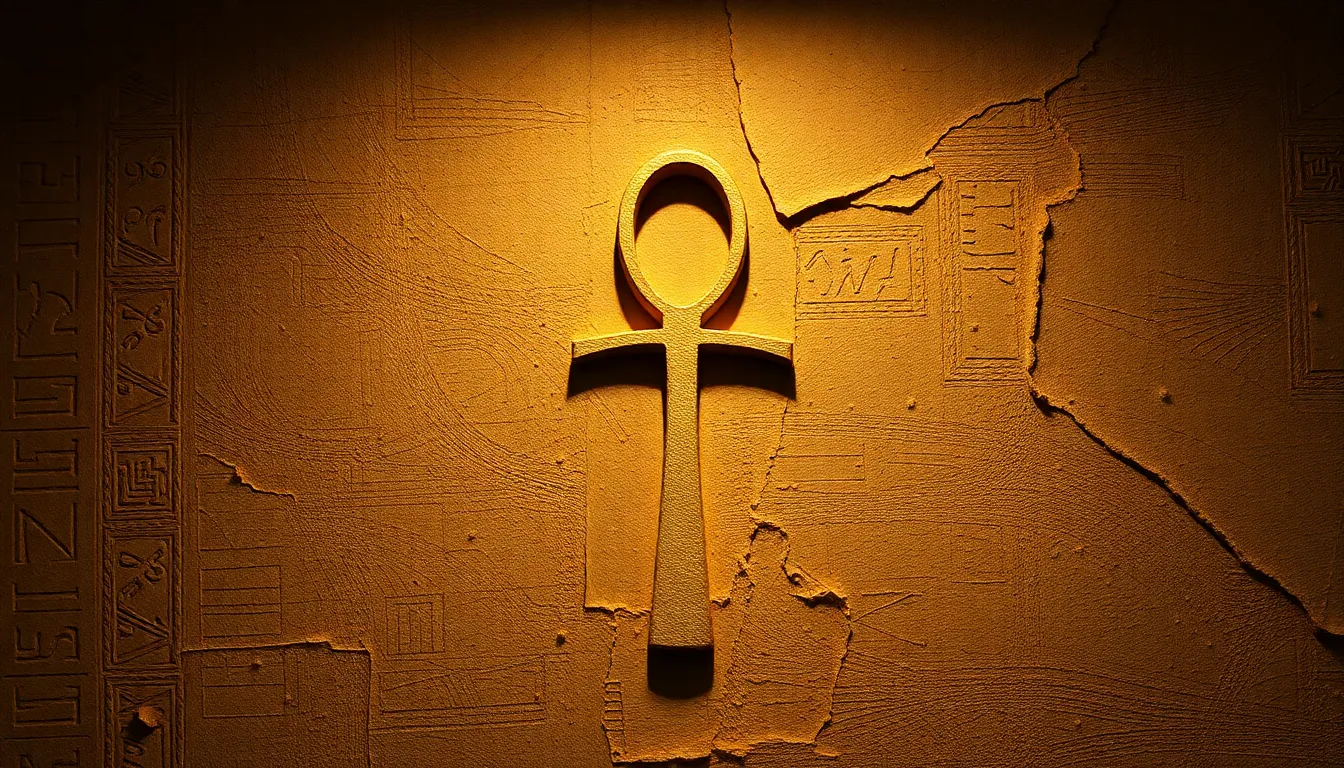The Symbolism of the Ankh in Divine Kingship
I. Introduction
The ankh, often recognized as the key of life, is one of the most potent symbols in ancient Egyptian mythology and culture. Its distinctive shape—a cross with a loop at the top—has garnered attention and reverence for millennia. The historical significance of the ankh extends beyond mere ornamentation; it embodies fundamental concepts of life, death, and the divine.
In ancient cultures, divine kingship was a prevailing ideology where rulers were seen as the earthly embodiments of the divine. This connection between kings and gods was crucial for maintaining order and harmony within society. This article aims to explore the symbolism of the ankh in relation to divine kingship, illustrating how this emblematic symbol encapsulates authority, legitimacy, and the essence of life itself.
II. Historical Context of the Ankh
The origins of the ankh can be traced back to ancient Egypt, where it first appeared in hieroglyphics around 3000 BCE. Initially, it symbolized life and fertility, but its meanings evolved over centuries, becoming deeply intertwined with concepts of divinity and kingship.
As time progressed, the representation of the ankh became more sophisticated, often depicted in conjunction with gods and goddesses. The ankh is frequently associated with the following:
- The goddess Isis, who is often seen holding an ankh, symbolizing her role in life and rebirth.
- The god Osiris, representing resurrection and eternal life.
- Pharaohs, as intermediaries between the gods and the people.
In comparison to other ancient symbols, the ankh stands out for its direct link to life and the afterlife, making it a unique emblem in the broader tapestry of ancient Egyptian iconography.
III. The Ankh as a Symbol of Life
The ankh is predominantly interpreted as a symbol of eternal life. This representation stems from the ancient Egyptian belief in an afterlife, where the soul continues to exist beyond death. The loop of the ankh signifies the eternal nature of life, while the crossbar represents the physical world.
Moreover, the relationship between the ankh and the concept of rebirth is significant. The Egyptians believed that through rituals and proper burial practices, the deceased could be reborn into the afterlife. This belief was central to funerary practices, where the ankh was often incorporated into tombs and burial artifacts to ensure the deceased’s safe passage into eternity.
IV. Divine Kingship: Concepts and Ideals
Divine kingship is a concept where rulers are seen as divinely appointed and endowed with supernatural powers. Characteristics of divine kingship include:
- The belief that the king is a god or a god’s representative on earth.
- The king’s role in maintaining maat, or cosmic order, which is essential for the harmony of the universe.
- The king’s responsibility to mediate between the gods and the people.
Historical examples of divine kingship can be found not only in ancient Egypt but also in other civilizations such as Mesopotamia and Mesoamerica. These rulers were often depicted in art and literature as possessing divine attributes, reinforcing their authority and legitimacy.
V. The Ankh and Royal Authority
In the context of royal authority, the ankh symbolizes the legitimacy of kingship. It serves as a reminder that the pharaoh’s power is not merely a result of military strength or political maneuvering, but is granted by divine will.
The ankh appears frequently in royal iconography, often depicted in the hands of pharaohs or alongside other symbols of power, such as the crook and flail. The following points highlight the ankh’s role in royal rituals and ceremonies:
- In coronation ceremonies, the ankh was presented to the new king, signifying his divine right to rule.
- During funerary rites, the ankh was placed in tombs to empower the deceased king in the afterlife.
- The ankh was used in blessings, often seen in the hands of deities as they bestow life and prosperity upon the king.
VI. The Ankh in Art and Iconography
The ankh is extensively depicted in ancient Egyptian art, appearing in various forms from hieroglyphics to monumental sculptures. Its presence serves not only decorative purposes but also conveys deeper meanings related to life and the divine.
Key artifacts featuring the ankh include:
- Statues of gods and pharaohs holding the ankh, symbolizing their power over life and death.
- Tomb paintings illustrating the deceased receiving the ankh from deities, representing their transition to the afterlife.
- Jewelry and amulets that incorporate the ankh, believed to bestow protection and eternal life.
The influence of the ankh can also be seen in later artistic traditions, where it has been adopted and adapted in various cultural contexts.
VII. The Ankh Beyond Egypt: Influence in Other Cultures
The symbolism of the ankh spread beyond the borders of Egypt, influencing neighboring civilizations such as Nubia and the Greco-Roman world. In these cultures, the ankh was often adapted, yet it retained its core associations with life and divinity.
Modern interpretations of the ankh have emerged in contemporary spirituality and popular culture, where it is often embraced as a symbol of life, love, and unity. Some key points of its modern significance include:
- The ankh is frequently used in spiritual practices and rituals, signifying the connection to the divine.
- In fashion and jewelry, the ankh represents a blend of ancient wisdom and modern aesthetics.
- It is often incorporated into tattoos as a symbol of eternal life and spiritual rebirth.
VIII. Conclusion
In summary, the ankh holds a profound significance in the context of divine kingship. It symbolizes not only the legitimacy and authority of rulers but also embodies the essential concepts of life, death, and rebirth. The enduring legacy of the ankh, both in ancient Egypt and in contemporary culture, highlights its powerful intersection of symbolism, authority, and spirituality.
As we reflect on the ankh’s journey through history, we recognize its role as a bridge between the earthly and divine, a testament to humanity’s quest for understanding life and the cosmos.




